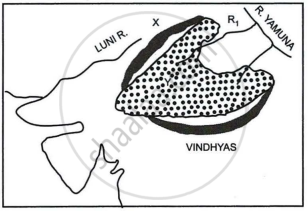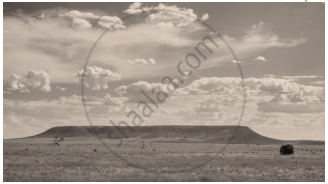Advertisements
Advertisements
प्रश्न
Briefly explain the geological evolution of the Himalayas.
उत्तर
The Himalayan ranges were formed when the Indian plate was driven northwards and pushed beneath the Eurasian Plate. With the advance of the Indian Plate towards the north, the Tethys started contracting about 65-70 million years ago. About 30-60 million years ago, the two plates came closer and the Tethys sea crust began to fracture into thrust edges. About 20-30 million years ago, the Himalayan ranges started emerging.
संबंधित प्रश्न
Answer the following question.
Give three differences between the Western and the Eastern Himalayas.
Name any two standard geological eras, along with their duration.
Answer the following question:
Briefly explain the geological evolution of the peninsular plateau.
Name the following :
A pilgrimage center in Himachal Pradesh.
Name the following :
A historic place in Rajasthan.
Study the sketch map given below and answer the questions that follow:

- Identify the dotted region marked Y. Mention any three of its characteristic features.
- Name the mountain range marked X, the river marked R1 and the type of rock that constitutes the dotted region.
Study the sketch map given below and answer the questions that follow:

- State the direction of the movement of the jetstreams A and B in the Indian region. Give reasons for the same.
- How do the jetstreams A and B influence the Indian climate?
Assertion: The Himalayas were formed due to the collision of tectonic plates.
Reason: Indian plate moved northwards and pushed beneath the Eurasian Plate leading to the compression of sediments in the Tethys Sea.
How is the Himalayan River system different from the Peninsular River system?
Identify the image given below and explain the formation of this geological division in India.

